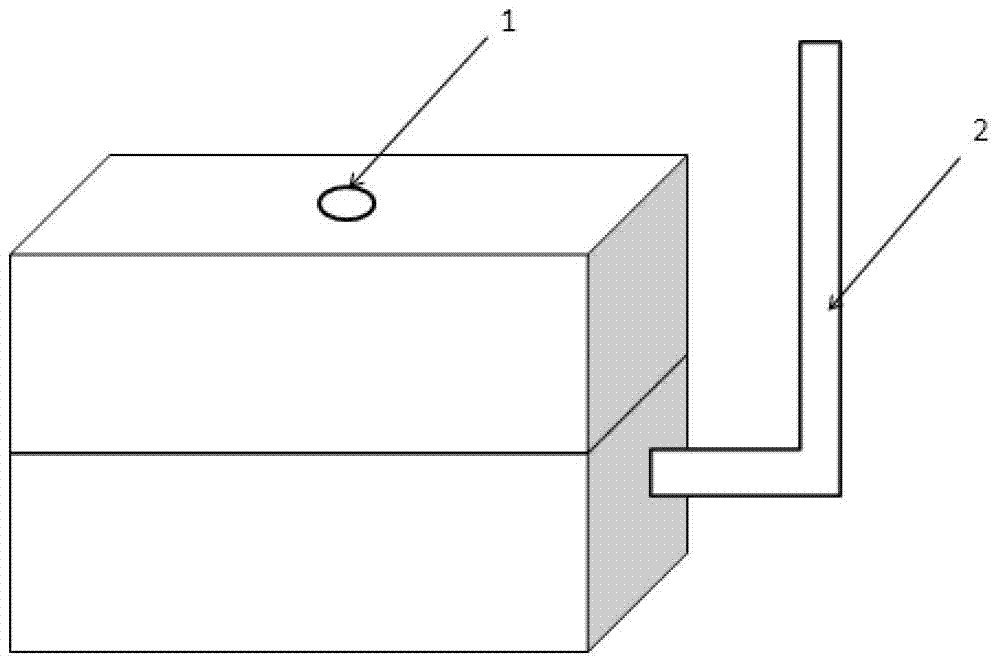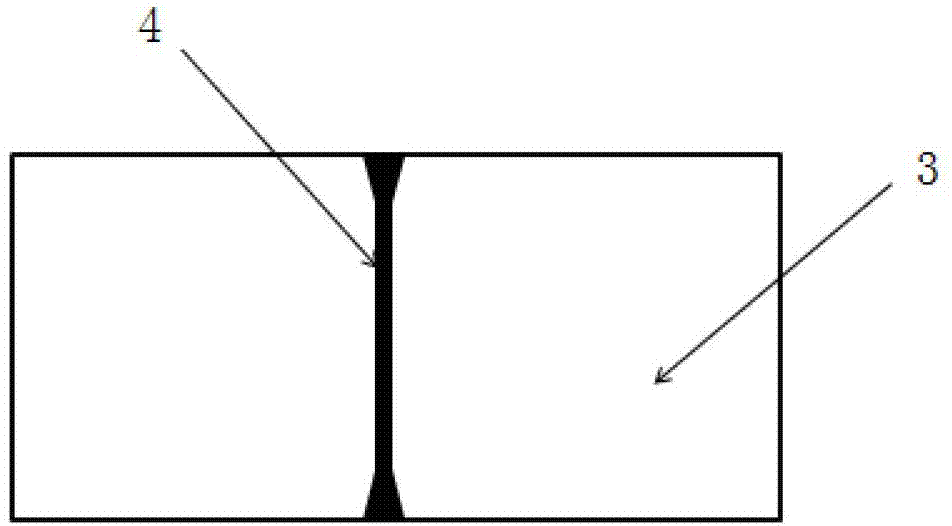Preparation method of coded aperture for neutron penumbra imaging
A coding aperture and imaging technology, applied in photography, photographic technology, optics, etc., can solve the problems of poor hole precision and surface quality, difficult electrode preparation, and inability to be widely used, and achieve good hole precision and surface quality, surface roughness Small, good effect on neutral
- Summary
- Abstract
- Description
- Claims
- Application Information
AI Technical Summary
Problems solved by technology
Method used
Image
Examples
Embodiment 1
[0033] This embodiment includes the following steps:
[0034] The first step is to draw the micro glass tube. Turn on the laser tube pulling instrument, put in the glass tube, conduct a power test, and obtain the critical power to break the glass tube. Replace the new glass tube, enter the tube drawing program, set the working parameters for drawing, and remove the drawn glass tube after the program runs.
[0035] The glass tube is a hollow quartz glass tube with a diameter of 1 mm.
[0036] The RAMP TEST result was 692.
[0037] The shape of the drawn glass tube is as figure 1 As shown, two identical glass tubes with biconical front ends can be obtained after cutting from the middle.
[0038] The working parameters are as follows:
[0039] Heat (output power)
Velocity (pull rate)
Pull
650
45
140
250
[0040] The laser tube pulling instrument used in this example is the P-2000 Laser Based Micropipe...
Embodiment 2
[0053] This embodiment includes the following steps:
[0054]The first step is to draw the micro glass tube. Turn on the laser tube pulling instrument, put in the glass tube, conduct a power test, and obtain the critical power to break the glass tube. Replace the new glass tube, enter the tube drawing program, set the working parameters for drawing, and remove the drawn glass tube after the program runs.
[0055] The glass tube is a hollow quartz glass tube with a diameter of 1 mm.
[0056] The RAMP TEST result was 689.
[0057] The shape of the drawn glass tube is as figure 1 As shown, two identical glass tubes with biconical front ends can be obtained after cutting from the middle.
[0058] The working parameters are as follows:
[0059] Heat (output power)
Velocity (pull rate)
Pull
550
45
140
150
[0060] The laser tube pulling instrument used in this example is the P-2000 Laser Based Micropipet...
Embodiment 3
[0073] This embodiment includes the following steps:
[0074] The first step is to draw the micro glass tube. Turn on the laser tube pulling instrument, put in the glass tube, conduct a power test, and obtain the critical power to break the glass tube. Replace the new glass tube, enter the tube drawing program, set the working parameters for drawing, and remove the drawn glass tube after the program runs.
[0075] The glass tube is a solid quartz glass tube with a diameter of 1 mm.
[0076] The RAMP TEST result is 724.
[0077] The shape of the drawn glass tube is as figure 1 As shown, two identical glass tubes with biconical front ends can be obtained after cutting from the middle.
[0078] The working parameters are as follows:
[0079] Heat (output power)
Velocity (pull rate)
Pull
600
45
140
200
[0080] The laser tube pulling instrument used in this example is the P-2000 Laser Based Micropipett...
PUM
| Property | Measurement | Unit |
|---|---|---|
| diameter | aaaaa | aaaaa |
Abstract
Description
Claims
Application Information
 Login to View More
Login to View More - R&D
- Intellectual Property
- Life Sciences
- Materials
- Tech Scout
- Unparalleled Data Quality
- Higher Quality Content
- 60% Fewer Hallucinations
Browse by: Latest US Patents, China's latest patents, Technical Efficacy Thesaurus, Application Domain, Technology Topic, Popular Technical Reports.
© 2025 PatSnap. All rights reserved.Legal|Privacy policy|Modern Slavery Act Transparency Statement|Sitemap|About US| Contact US: help@patsnap.com



